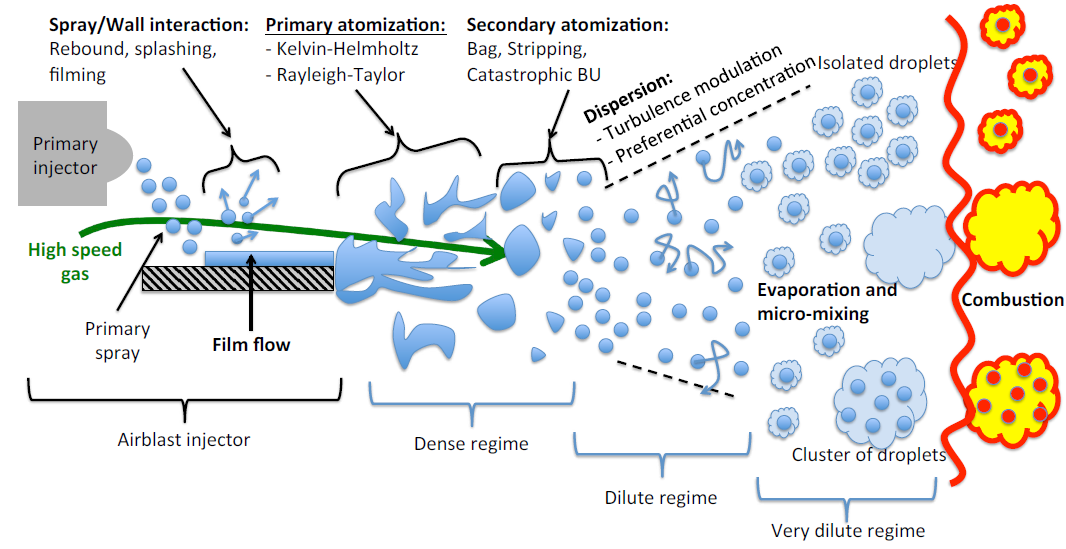Overview
Atomization processes are used in a wide range of industrial applications. They are essential in the medical sector, in the process industry and in energy technology in order to increase the surface area of liquids. Air-assisted atomizers are used in energy technology in particular, as they allow flexible control for consistent spray quality at varying operating points. Air-assisted atomizers are therefore particularly attractive in aircraft engines.
Physically, the atomization process is characterized by complex dynamic phenomena that have so far prevented a closed analytical description (see figure). Furthermore, since the process is chaotic in nature and thus has strong spatial and temporal scale differences, we aim at an adequate statistical description to improve industrial design tools.
Vision
In order to better describe the statistical character, we pursue a combined experimental and numerical development approach at the institute. Various methods are used from an experimental point of view:
- Laser Doppler anemometry
- Phase Doppler anemometry
- Particle Image Velocimetry
- Shadowgraphy
- Particle and Ligament Tracking Velocimetry
- Laser Focus Displacement
Numerical investigation of airblast atomization at subatmospheric conditions
The current development trends of civil aircraft engines are mainly driven by increasing efficiency and reducing emissions. The consequence of this is that the re-ignition of modern engines at high altitudes can become safety-critical in the event of a flameout. This is due to the combination of increasing fan diameters with increased inertia, increasingly compact combustion chambers and the extreme thermodynamic conditions of the air at the corresponding altitude. In order to be able to guarantee safe operation in sub-atmospheric conditions in the future, the ignition problem is being investigated in detail as part of the EU project "PROTEUS" in the Horizon 2020 funding program in cooperation with Rolls-Royce and the universities in Cambridge and Cranfield. With the aim of deriving improved injection models for industrial design tools, our focus is on the high-resolution numerical simulation of kerosene injection using the Smoothed Particle Hydrodynamics (SPH) method. Particularly challenging for the modeling is the fact that large, aspherical kerosene fragments characterize the spray dynamics and spray statistics resulting from the low momentum of the air flow.
In the numerical area, however, we focus on a multiphase Smoothed-Particle-Hydrodynamics (SPH) method. For this purpose, we have independently developed a massively parallelized code.



